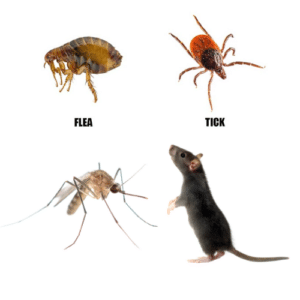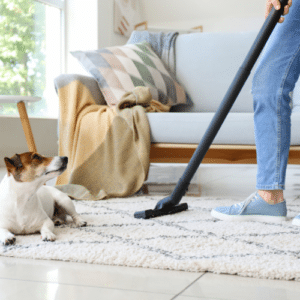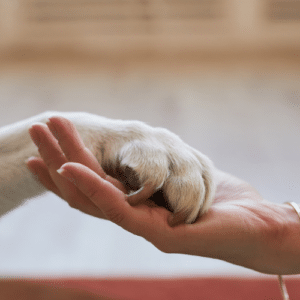
11 Jun Pest Control for Pet Owners
Protecting Pets from Pests
As pet owners, we love our furry friends and want to ensure they are safe and healthy. However, managing pest problems while keeping pets safe can be challenging. Pests like fleas, ticks, and mosquitoes pose significant risks to our pets, and traditional pest control methods can introduce harmful chemicals into our homes. At Pest Busterzz, we understand the importance of using pet-safe pest control methods. This article provides tips and strategies to help pet owners protect their pets while effectively managing pest problems.
In South Florida, pets often encounter pests such as fleas, ticks, mosquitoes, and rodents. Fleas and ticks are common parasites that feed on the blood of animals, causing itching, skin irritation, and in some cases, transmitting diseases. Mosquitoes are not only a nuisance but can also transmit heartworm, a potentially deadly disease for dogs. Rodents, such as rats and mice, can carry diseases that pose health risks to both pets and humans.
Traditional pest control methods often rely on toxic chemicals that can harm pets. Exposure to these chemicals can lead to a range of health issues, from mild skin irritation to severe poisoning. Therefore, it is crucial to choose pet-safe pest control solutions that effectively manage pests without putting your pets at risk.
Healthy Pets Healthy Home
Organic pest control solutions offer several benefits for pet owners. These methods use natural ingredients that are safe for pets and the environment. At Pest Busterzz, we use a variety of organic products, such as botanical insecticides and eco-friendly traps, to manage pest problems. These products are effective in eliminating pests without the harmful side effects associated with conventional pesticides.
Using organic pest control methods not only protects your pets but also promotes a healthier home environment. Organic solutions reduce the risk of chemical exposure and support sustainable pest management practices. By choosing organic pest control, you can keep your home pest-free while ensuring the safety of your pets and family.
Integrated Pest Management (IPM) is a holistic approach to pest control that focuses on long-term prevention and minimal use of chemicals. IPM combines various strategies, such as biological control, habitat manipulation, and the use of resistant varieties, to manage pests effectively. Implementing IPM in pet-friendly homes involves conducting regular inspections, sealing entry points, and maintaining cleanliness.
Biological control methods, such as introducing natural predators like ladybugs or beneficial nematodes, can help manage pest populations. Habitat manipulation, such as removing standing water and keeping the yard free of debris, reduces the attractiveness of your property to pests. By integrating these strategies, you can create a safe and pest-free environment for your pets.
Prevent Pests with Cleanliness
Maintaining regular grooming and hygiene routines for your pets is essential in preventing pest infestations. Regular baths and brushing help remove fleas, ticks, and other parasites from your pet’s coat. Using pet-safe flea and tick treatments, such as shampoos and sprays, can provide an added layer of protection.
Keeping your pet’s living area clean is equally important. Wash bedding and toys regularly to eliminate any pests that may be hiding there. Vacuum carpets and upholstery frequently to remove flea eggs and larvae. By maintaining a clean and hygienic environment, you can significantly reduce the risk of pest infestations affecting your pets.
Proper home and yard maintenance are crucial in preventing pest infestations. Keep your yard clean and free of debris where pests can hide. Trim bushes and grass regularly to reduce hiding spots for fleas and ticks. Sealing entry points, such as cracks and gaps in doors and windows, prevents rodents and insects from entering your home.
Ensure that pet food is stored in sealed containers to avoid attracting pests. Clean up any spilled food immediately and keep feeding areas clean. Proper waste management, such as regular disposal of trash, also helps in reducing the likelihood of pest infestations. By taking these preventive measures, you can create a safe and pest-free environment for your pets.
Pest Control You Can Trust
Pest Busterzz offers expertise in pet-safe pest control, ensuring your pets are protected while effectively managing pest problems. Our team uses organic and eco-friendly solutions tailored to your specific needs. By choosing Pest Busterzz, you benefit from our experience and commitment to providing safe, effective pest control services.
Our customized pest control plans are designed to fit the needs of pet owners. We conduct thorough inspections and develop comprehensive treatment strategies to address your pest problems. With Pest Busterzz, you can be confident that your home and pets are in good hands.
At Pest Busterzz, we understand that every home and pet owner has unique needs. Our customized pest control plans take into account the specific challenges you face. We provide detailed inspections to identify pest activity and vulnerable areas, followed by tailored treatment plans that prioritize pet safety.
Our services include regular monitoring and follow-up treatments to ensure long-term pest prevention. We also offer preventive tips and guidance to help you maintain a pest-free environment. By working with Pest Busterzz, you can achieve effective pest control while keeping your pets safe.
Home Prep for Pet Safety
Before a pest control treatment, it’s important to prepare your home to ensure the safety of your pets. Remove pet food and water dishes from treatment areas. Cover or store pet toys, bedding, and other items to prevent contamination. If possible, keep your pets in a separate, untreated area during the application.
Inform the pest control professionals about your pets and any specific concerns you have. They can provide guidance on additional steps to take to protect your pets during the treatment. Proper preparation helps ensure a smooth and safe pest control process.
After the pest control treatment, take steps to ensure your pets’ safety and comfort. Clean and ventilate treated areas to remove any residual chemicals. Wash pet bedding, toys, and feeding dishes to eliminate any traces of the treatment. Monitor your pets for any signs of discomfort or adverse reactions and contact your veterinarian if needed.
Following these post-treatment care steps helps ensure that your home remains safe for your pets. Regular monitoring and maintenance further reduce the risk of future infestations. By staying proactive, you can keep your home pest-free and your pets healthy.
Conclusion
Managing pest problems while ensuring pet safety can be challenging, but it is essential for the well-being of your pets and family. Regular grooming, proper home and yard maintenance, and using pet-safe pest control methods are crucial steps in preventing pest infestations. Professional pest control services, like those offered by Pest Busterzz, provide the expertise and solutions needed to manage pests effectively while keeping your pets safe.
At Pest Busterzz, we are committed to providing safe, effective, and eco-friendly pest control solutions tailored to the needs of pet owners. Our team of professionals uses organic methods to protect your home and pets from pests. Contact Pest Busterzz today to schedule a consultation and learn more about our pet-safe pest control services.
For more information or to schedule an inspection, visit our website or call us. We look forward to helping you keep your home and pets safe from pests. With Pest Busterzz, you can enjoy peace of mind knowing that your pest problems are being handled by professionals who care.







No Comments